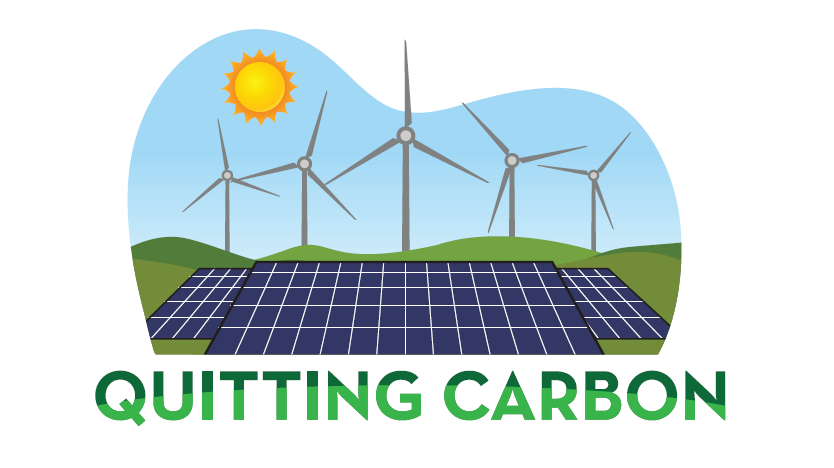What I’m reading: Electrification programs advance in California and New York City, research roundup, and more

Quitting Carbon is a 100% subscriber-funded publication. To support my work, please consider becoming a paid subscriber or making a one-time donation.
Welcome back to another recap of highlights from what I’ve been reading. Watch next week, likely just before the Thanksgiving holiday break, for a Q&A on legislation recently signed into law in California that aims to accelerate the transition away from fossil fuels at the tens of thousands of industrial sites across the state.
Enjoy the weekend. And thanks, as always, for reading.
Electrification initiatives advance in California and New York City
GO ZERO rebate program launches in Southern California: In early September, the South Coast Air Quality Management District (SCAQMD) launched GO ZERO, a $21 million incentive program "designed to help residents and businesses switch to cleaner, zero-emission space and water heating technologies" such as air-source heat pumps and heat pump water heaters.
"ZERO provides incentives and free installer training resources and bootcamps for residents and small businesses across Los Angeles, Orange, Riverside, and San Bernardino counties. 75% of total program funding is reserved for underserved communities to help ensure an equitable clean energy transition across Southern California," according to an update on the launch from the Building Decarbonization Coalition (BDC).
On its November California policy call, BDC reported that GO ZERO funding for multifamily homes had already been fully reserved; that approximately 400 applications have been received for single-family homes, but 90% of the available funding remains; and SCAQMD had made it easier for small businesses to qualify for the program.
California approves new window heat pump, 120-volt induction pilot programs: Yesterday, the California Public Utilities Commission approved two new initiatives from the California Market Transformation Administrator that should accelerate the adoption of window heat pumps and 120-volt induction stoves.
"120-volt heat pump and induction cooking products will allow households to electrify without costly electrical upgrades. These initiatives will transform the market so anyone can walk into their local home improvement store and find these options readily available," said Rebecca Barker, senior associate attorney at Earthjustice, in a statement.
"Both pilot programs include manufacturer challenges and a comprehensive suite of interventions to encourage manufacturers to produce and distribute these models at scale," according to the statement.
New York City to install 10,000 induction stoves in public housing: I know firsthand that having 120-volt models of heat pumps and induction stoves readily available on the market would have saved time and money on my own home electrification project.
Commercialization of 120-volt induction stoves got a boost last week with the news that three New York state and city agencies were partnering with the appliance manufacturer Copper on a $32 million project to install 10,000 induction stoves in public housing units in New York City.
"The competitive innovation challenge … seeks to replace existing gas stoves to improve air quality in apartments, eliminate service outages and avoid costly gas infrastructure and electrical upgrades in NYCHA [New York City Housing Authority] buildings. The initiative aims to develop a new class of induction stoves that can be installed in older buildings using standard 120-volt, 20-amp outlets," according to a New York State Energy Research and Development Authority press release.
Research roundup
I'm back with what will likely be a recurring section in these roundups highlighting noteworthy reports and studies you might have missed:
India, China approaching emissions milestones: Renewables deployment is beginning to stabilize emissions on India and China’s coal-heavy grids.
"India’s carbon dioxide (CO2) emissions from its power sector fell by 1% year-on-year in the first half of 2025 and by 0.2% over the past 12 months, only the second drop in almost half a century. As a result, India’s CO2 emissions from fossil fuels and cement grew at their slowest rate in the first half of the year since 2001 – excluding Covid,” wrote Centre for Research on Energy and Clean Air (CREA) researchers Anubha Aggarwal and Lauri Myllyvirta in an analysis published for Carbon Brief.
"The analysis also shows that emissions from India’s power sector could peak before 2030, if clean-energy capacity and electricity demand grow as expected."
Meanwhile, another analysis published by CREA’s Myllyvirta at Carbon Brief last week found that China’s CO2 emissions have been flat or falling for 18 months.
"China’s carbon dioxide (CO2) emissions were unchanged from a year earlier in the third quarter of 2025, extending a flat or falling trend that started in March 2024," wrote Myllyvirta. "The rapid adoption of electric vehicles (EVs) saw CO2 emissions from transport fuel drop by 5% year-on-year, while there were also declines from cement and steel production."
Cheaper batteries could offset loss of EV tax credit: Shoppers who missed out on the now expired federal tax credit for electric vehicles could still benefit from cheaper batteries going forward.
"The price of lithium batteries – the most expensive component in EVs – has fallen 30 percent worldwide since 2020, according to a new study published this month in the journal Nature Reviews," Alex Nieves and Mike Lee reported last month for Politico and E&E News.
"The paper found that the average battery produced in the U.S. now costs $130 per kilowatt-hour and that EVs could become price-competitive with gas cars once prices hit $80 to $100 per kWh … Battery prices have already fallen to $75 per kWh in China, the world’s largest EV market."
Yes, EVs are much cleaner than gas cars: I still get these questions all the time: Are EVs really better for the planet than gas cars? And, what about the batteries? Perhaps this study will put the doubts to rest for good.
"Making electric vehicles and their batteries is a dirty process that uses a lot of energy. But a new study says that EVs quickly make up for that with less overall emissions through two years of use than a gas-powered vehicle," the AP’s Alexa St. John reported last month.
"The study also estimated that gas-powered vehicles cause at least twice as much environmental damage over their lifetimes as EVs, and said the benefits of EVs can be expected to increase in coming decades as clean sources of power, such as solar and wind, are brought onto the grid."
The study was published by researchers from Duke University and Northern Arizona University – my alma mater, go Lumberjacks!
More than 500 solar and storage projects at risk from Trump’s attack on renewables: Planned solar and storage projects that have not received all regulatory approvals could be vulnerable to the Trump administration’s efforts to stifle the projects, according to a report published earlier this month by the Solar Energy Industries Association (SEIA).
"The Trump administration's continued attack against renewable energy puts 510 solar and storage projects across the country at risk," wrote Politico’s Kelsey Tamborrino about the report. "The projects represent a total 116 gigawatts of capacity."
"Political attacks on solar and storage are putting half of all power planned to come onto the grid this decade at risk, just as electricity demand from AI is exploding," SEIA President and CEO Abigail Ross Hopper said in a statement.
Engage communities early to expand the grid: A new report from Environmental Defense Fund (EDF) and Clean Air Task Force offers stakeholders suggestions for how to get transmission projects built faster.
"Developers of electric transmission projects can reduce delays, build trust, and deliver local value by engaging communities early and tailoring benefits to local priorities," according to an EDF statement.
"The report, Beyond the Wires: Community Benefits from Transmission Projects, presents five case studies covering six successfully constructed transmission lines, showing that well-designed community benefit frameworks (CBFs) help reduce opposition, avoid costly delays, and deliver lasting value for both developers and communities."
Wind farms uplift rural property values and local schools: The Australian publication Renew Economy covered a report last week that dispels the notion that wind energy projects are bad for nearby residents and communities.
"Wind projects lead to better local schools and lift neighbouring property values by about 3 per cent, according to a surprising new piece of research out of the US this week," wrote Rachel Williamson.
"The study, Uplifting Winds in the journal Energy Research & Social Science, shows that in the decade after a wind farm starts working, there is a rise in spending on students in public schools, a small but significant fall in student-teacher ratios, and a lift in house prices. This is particularly for homes further than 3.2 km from a turbine, but the wealth effect is also felt by those within that zone as well."
Unlocking savings and accelerating electrification with alternatives to new fossil gas pipelines: The clean energy think tank RMI estimates that gas utilities in the U.S., are spending $7 billion annually to replace service lines.
In a new policy brief, RMI outlines how utilities can explore non-pipeline alternatives to those gas service line replacements. These alternatives include "targeted electrification, geothermal heat pumps, increased energy efficiency for existing homes, or re-lining or repairing existing gas pipelines," which "provide a practical path to reduce gas utility costs, support electrification, and give customers more choice in their energy future."
Legalize small apartments to build fast: One of the easiest ways to reduce emissions in our cities is to enable more people to live in walkable neighborhoods, with frequent transit service nearby.
On that score, "extra-large apartment buildings – high-rises and towers developed under transit-oriented development policies – are great, but they’re a) slow and costly to build and b) geographically restricted to small slivers of a city’s land, often the busiest, most polluted corridors," writes Sightline’s Daniel Oleksiuk.
So, for politicians looking to build new homes quickly, what does he advocate for instead? Small apartment buildings, or what is often referred to as a form of "gentle density."
"If [Cascadia’s] leaders were serious about building more homes fast, there’s an answer in plain sight: small apartment buildings, allowed citywide – just like they used to be, before zoning rules banned them on most urban land," he writes.
"Small apartment buildings, typically fitting on a standard single lot and no taller than a mature tree, have numerous advantages: they’re faster, cheaper, a better use of construction workers’ time, and a big opportunity for small local builders. Plus, obviously, they house more people per acre than single-detached homes."

Bonus: John Oliver on public media
Perhaps the bleak outlook for my industry is weighing a bit heavily on me because I teared up twice watching John Oliver's impassioned tribute to public media in the U.S. on the latest (still very funny, as always) episode of Last Week Tonight – once, when he showed a clip of Fred Rogers, i.e. "Mister Rogers" of PBS fame, defending funding for public television at a U.S. Senate hearing in 1969, and again, when he played recordings of listeners of Blue Ridge Public Radio sharing how the station’s programming had kept them going in the wake of floods that devastated Western North Carolina in the aftermath of Hurricane Helene in September 2024.
The future of many public broadcasting stations in the U.S. is in doubt, of course, because in July Republicans in Congress approved a $9 billion recissions package submitted by the Trump administration that canceled $1.1 billion for the Corporation for Public Broadcasting (CPB).
In the short term, to address what Oliver rightly calls a "dire situation," you can donate to initiatives such as the Public Media Bridge Fund or Adopt A Station to support the many stations in need. "Public Media Company projects that as many at 115 stations, collectively serving 43 million Americans, are likely to close by mid-2026," following the elimination of CPB funding, according to the Bridge Fund website.




